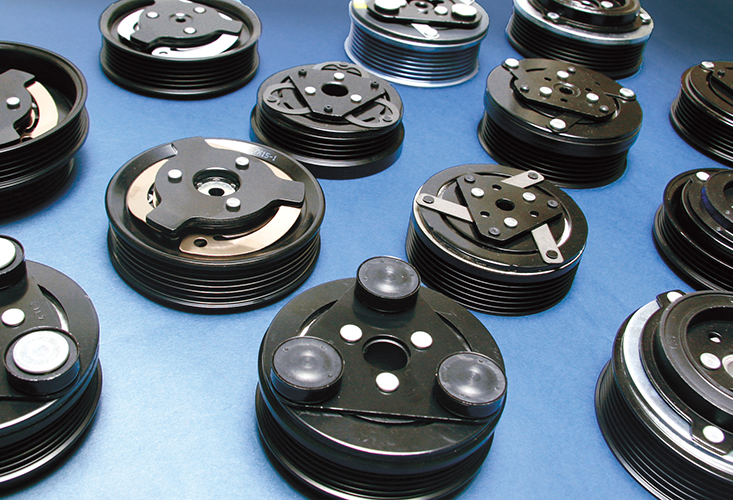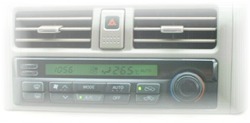AUTOMOTIVE AIR CONDITIONING CLUTCH SYSTEM

AUTOMOTIVE AIR CONDITIONING CLUTCH SYSTEM

Air conditiner is a standard equipment for most cars. Clutch plays an important role in air conditioning system by transferring and disconnecting engine torque to compressor. Most drivers feel more or less a reduction of engine power when they turn on the air conditioner. This is because portion of engine power is used via belt to turn the compressor in order to compress the cooling medium.
This impacts negatively on mileage. While air conditioner is not on, it is desirable not to run the compressor, but since it is run via belt from the engine, turning off the compressor requires to stop the engine too. So to keep the engine running and to extract its torque only when it’s needed, a mechanism to connect and disconnect the compressor from the engine–clutch–is needed.
How air condining works:
When liquid turns into gas, it absorbs heat from the environment. For example, when your arm is rubbed by an alcohol swab before receiving a shot, your skin feels cold. This is because as liquid alcohol vaporizes into gas, it aborbs heat from your skin. Conversely, when gas condenses into liquid, it discharges heat to the environment. What absorbs and discharges heat, such as alcohol is called medium, and as cooling medium for air conditioning system, Freon is primarily used.
How dehumidifier works:
“When gas condenses into liquid, it discharges heat to the environment” is another way of saying that when heat is taken away from gas, it condenses into liquid. For example, look at condensation on the surface of a glass containing cold water. This is because the water vapor in the air, which comes in contact with the cold glass, condenses into liquid water. So it can also be said that the same amout of humidity has just been removed from the air.
Cooling mechanism of car air conditioner:
1) In order to discharge the heat that the cooling medicum has absorbed, the compressor compresses it (clutch engages and disenages this compressor), and while the medium is at high temperature and high pressure, it is sent to the condensor.
2) Contacting the air sent to the condensor, the medium discharges its heat and condenses into liquid. This cools the car interior.
3) While the receiver temporarily stores the medium, the impure substances are removed from the medium. The receiver then sends the medium to the expansion valve.
4) The medium is sprayed into the evaporator and turns into gas instantly. When it turns into gas, the evaporator and the surrounding air is cooled and at the same time, water vapor in the air condenses into water on the surface of the evaporator. By discharging the water, the interior of car is dehumidified. This cool and dehumidified air cools the interior. The medium then goes back to (1) and repeats the cycle.
